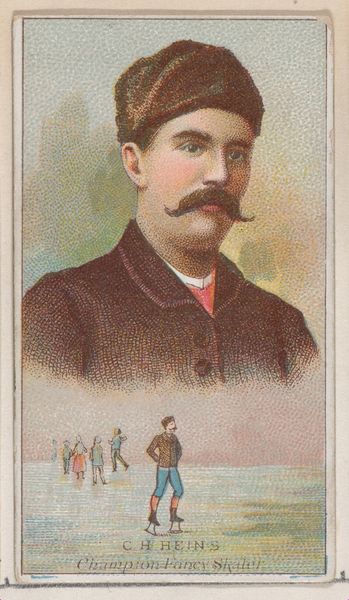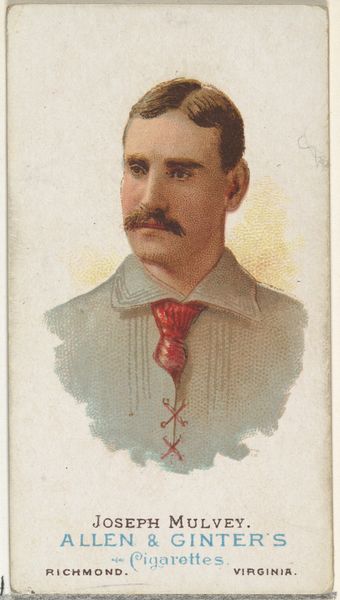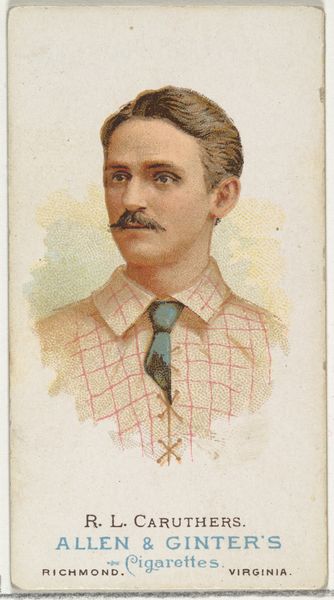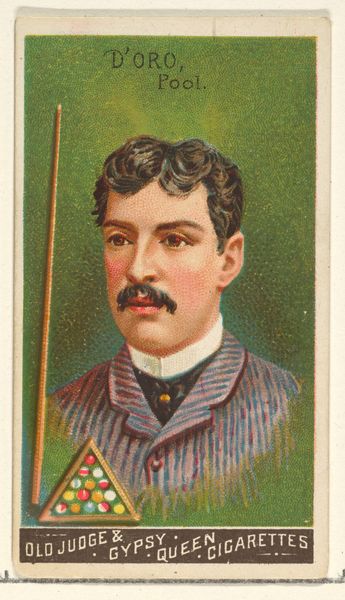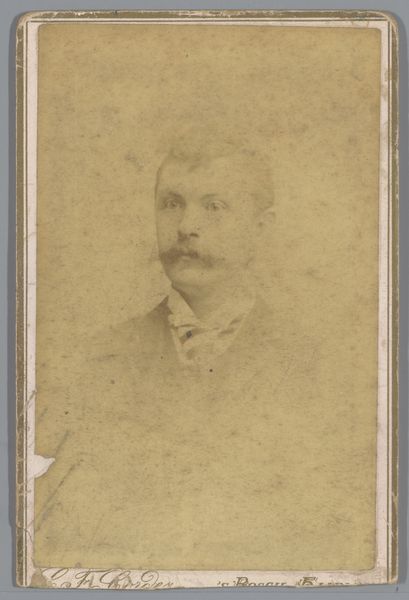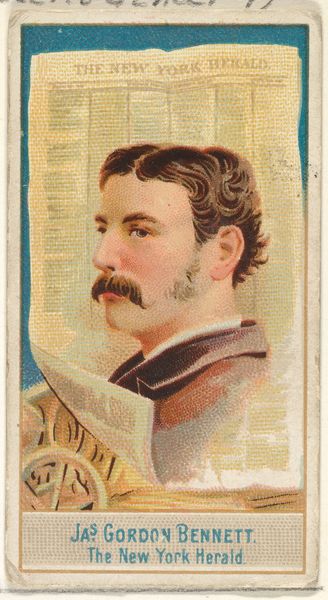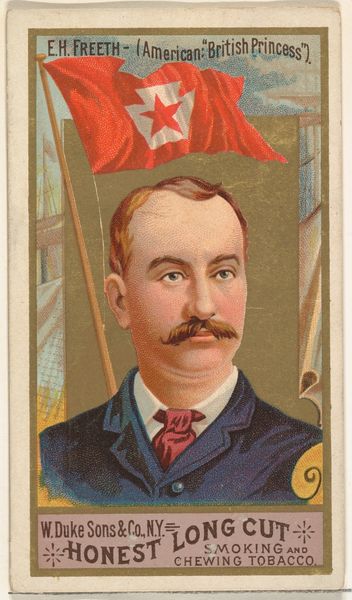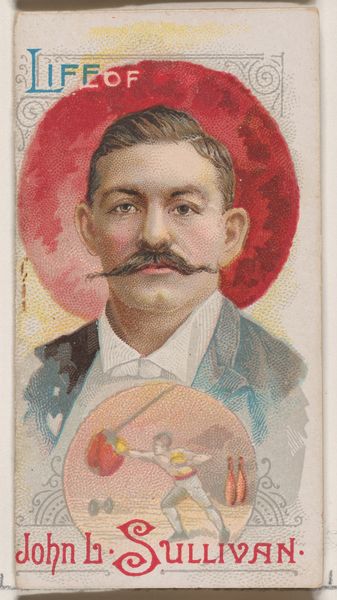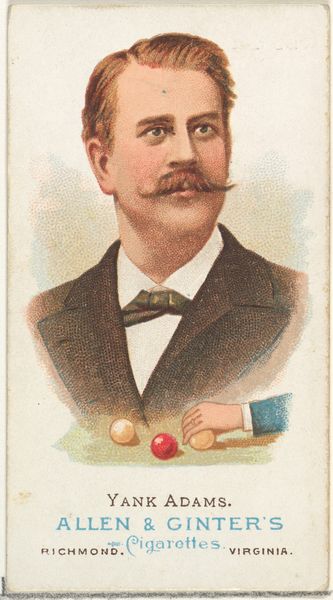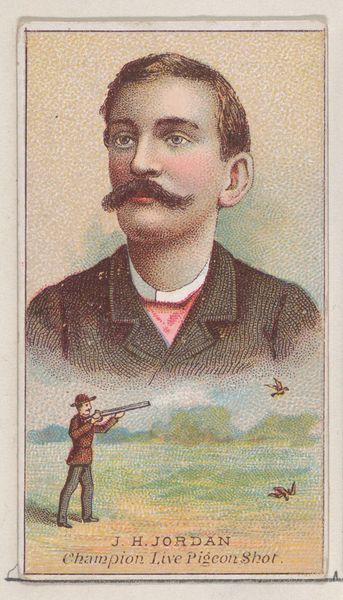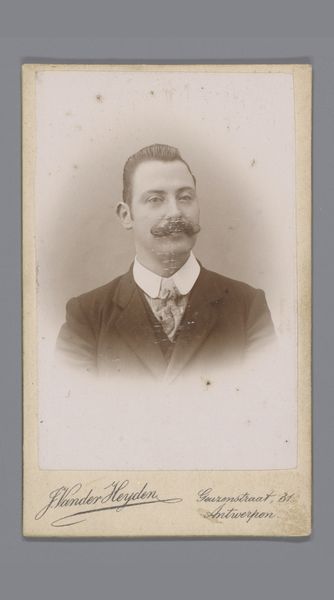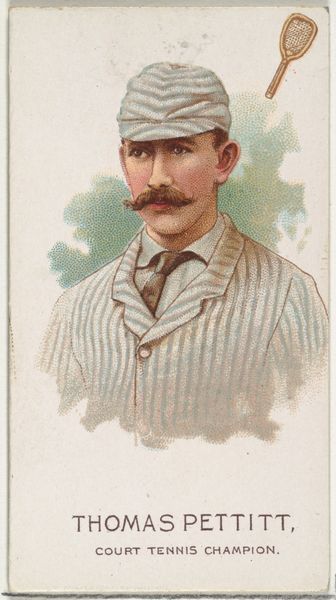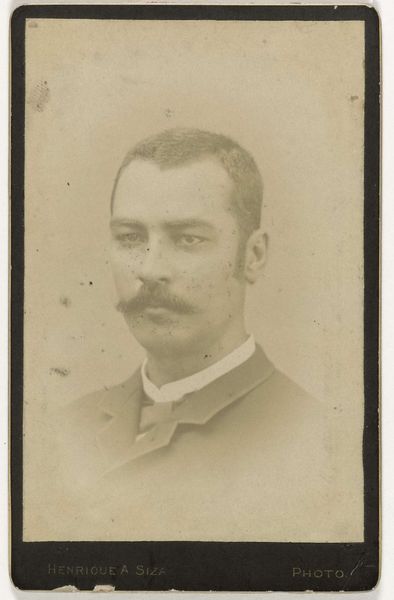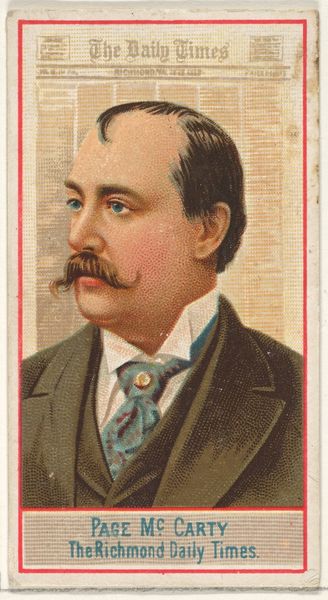
History of Jake Kilrain, from the Histories of Poor Boys and Famous People series of booklets (N79) for Duke brand cigarettes 1888
0:00
0:00
drawing, print, paper
#
portrait
#
drawing
# print
#
impressionism
#
paper
#
men
#
portrait drawing
#
watercolour illustration
Dimensions: Overall (Booklet closed): 2 3/4 × 1 1/2 in. (7 × 3.8 cm) Overall (Booklet open): 2 3/4 × 2 7/8 in. (7 × 7.3 cm)
Copyright: Public Domain
Editor: This is "History of Jake Kilrain," a portrait from a series of booklets for Duke brand cigarettes, dating back to 1888. The lithographic print on paper is really interesting… it makes me wonder about celebrity culture, even back then! What can you tell me about this work? Curator: What strikes me is the intersection of commerce and portraiture. These cards were essentially packaging inserts, incentives to purchase cigarettes. The materiality is key: mass-produced paper, ink, the printing process itself speaks volumes about late 19th-century consumer culture. How does the availability and mass production of an item change the art we create, and who is allowed to see it? Editor: So, the context of it being part of a mass-produced item is the key here? I mean, you could say the same about, say, Andy Warhol using soup cans later in the 20th Century. Curator: Precisely. This isn’t some rarefied oil painting meant only for an elite audience. It's art circulated amongst the masses through a product linked to working class pleasure. Think about who had access to it, and what their lives may have looked like. And further, think of the labour required for each card produced. Does the art change in value, being tied to capital? Editor: That’s a really interesting way to think about it. It definitely makes me consider how accessibility impacts the perception of art, and what's deemed "high" versus "low" art. Curator: Exactly! By considering the means of production, the materials used, and its intended audience, we gain a far richer understanding of both the image and the society that produced it. Editor: Thanks, I definitely see it in a new light now. The intersection of everyday consumption and art… something to think about.
Comments
No comments
Be the first to comment and join the conversation on the ultimate creative platform.
